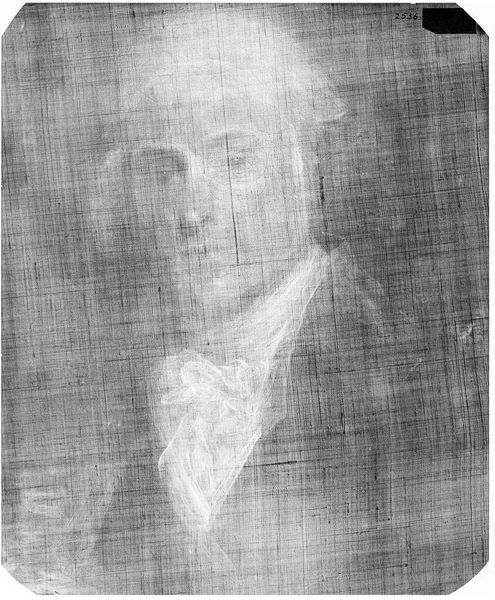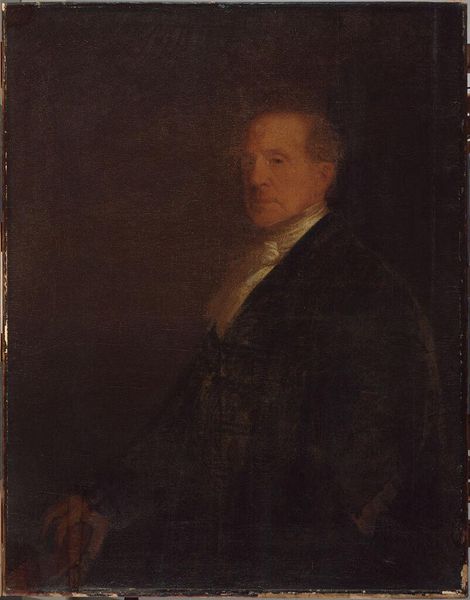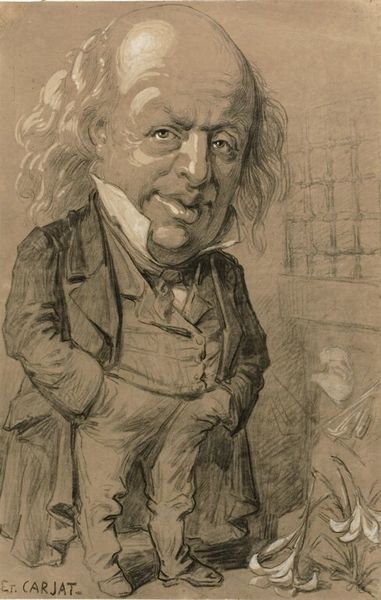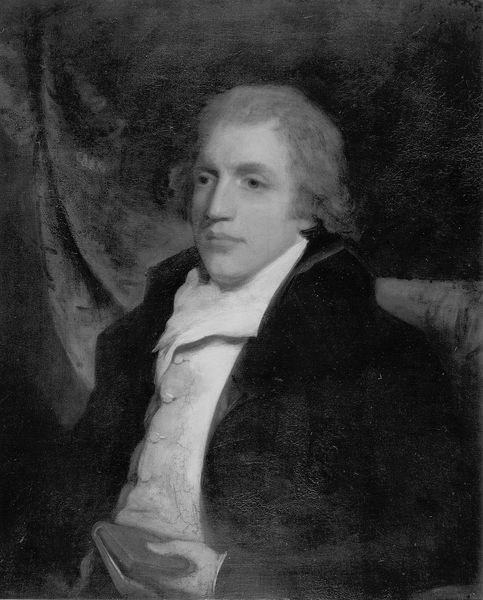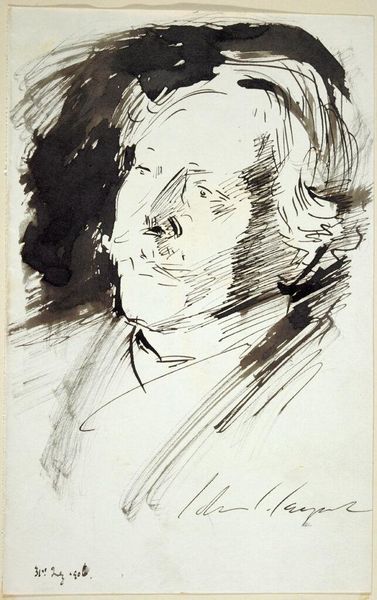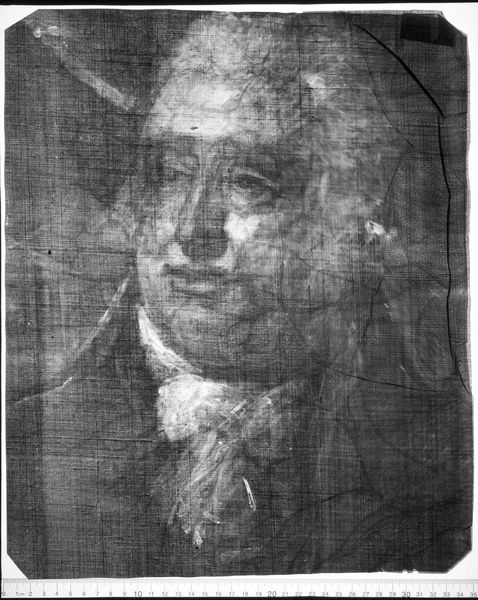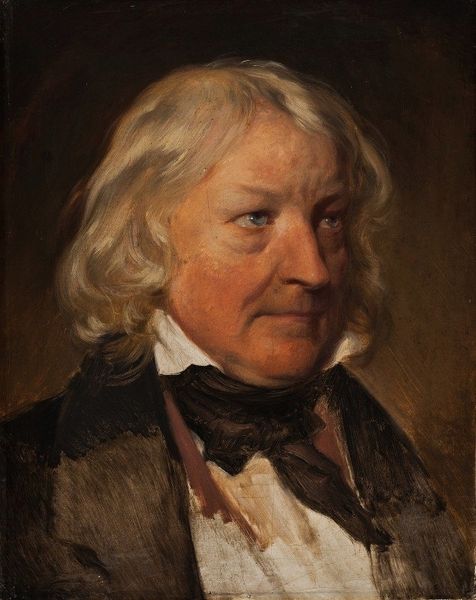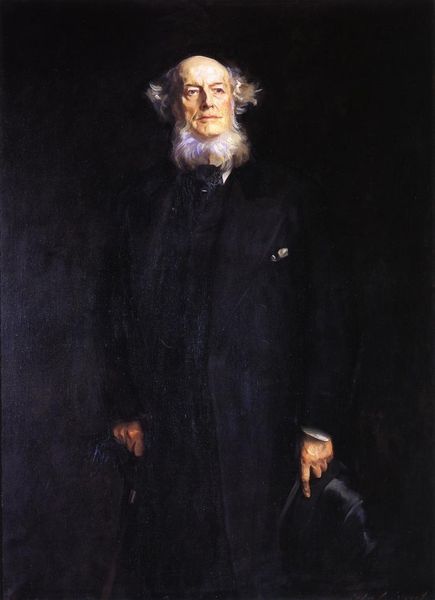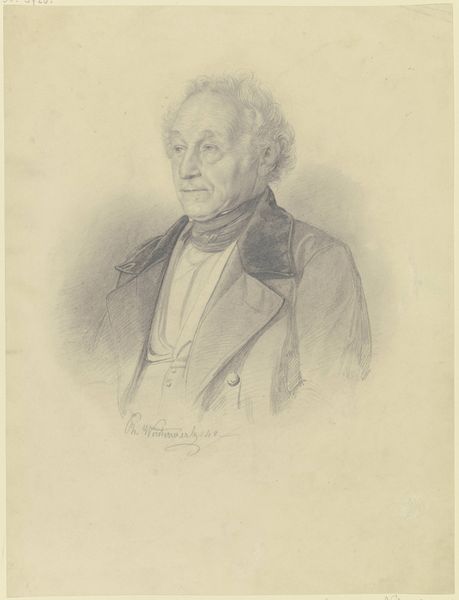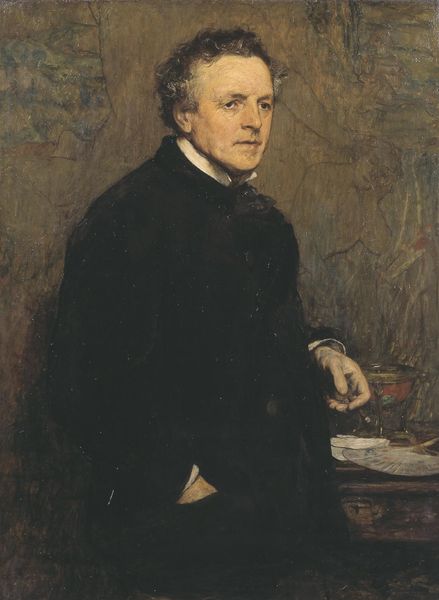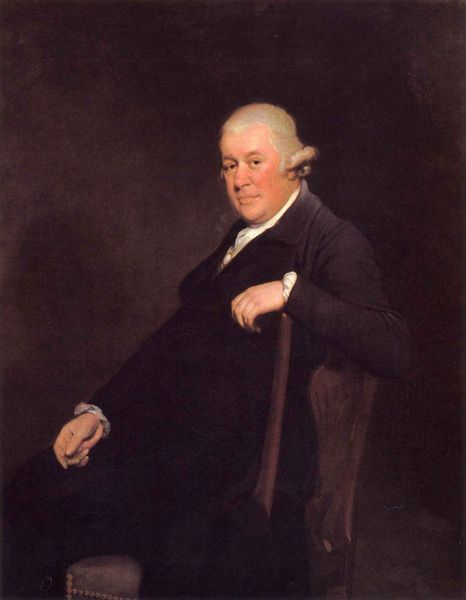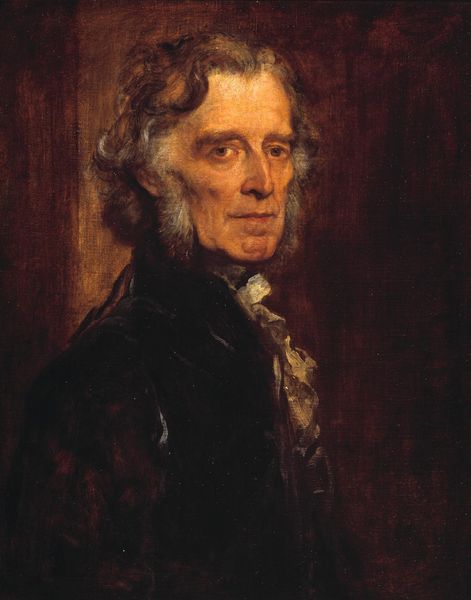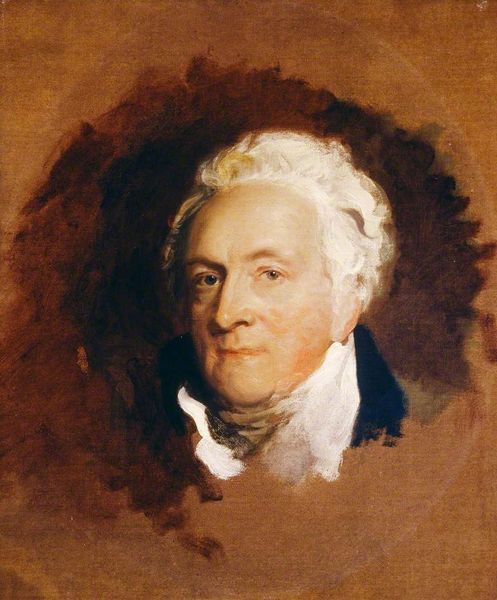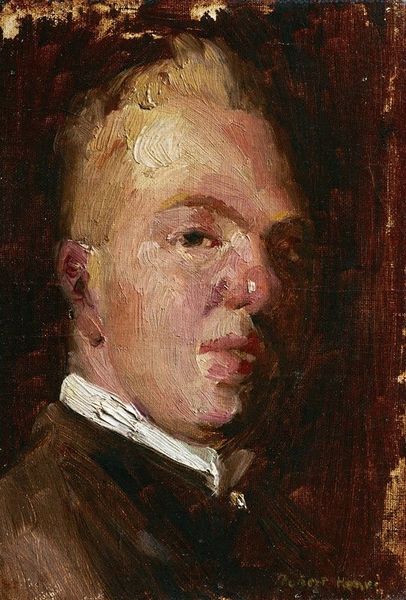
#
portrait
#
charcoal drawing
#
possibly oil pastel
#
charcoal art
#
oil painting
#
neo expressionist
#
male-portraits
#
acrylic on canvas
#
portrait head and shoulder
#
underpainting
#
animal drawing portrait
#
portrait drawing
Copyright: Public domain
Curator: Looking at "Portrait of the Artist's Father (Leonard-Sebastien Boudin)" painted around 1850 by Eugène Boudin, one sees a profound and layered image. Editor: It strikes me as a study in browns and ochres; somber, almost severe in its feeling. The brushwork seems rapid, quite gestural for a formal portrait. What were Boudin’s intentions, do you think? Curator: On one level, it is, of course, a son's portrayal of his father, holding inherent respect and filial devotion. Boudin might be capturing his father's essential nature and position within his family. Symbolically, the father can embody tradition, stability, and heritage. Editor: But could the relative lack of detail, that pervasive darkness, also suggest a sense of distance or perhaps the artist's grappling with patriarchal structures, painted during an era defined by immense societal upheaval? I’m seeing conflicting social pressures manifested through the canvas itself. Curator: Interesting thought. I believe that we see both elements represented here: tradition and underlying tensions in the painting. Observe how light barely touches his face, a key visual signifier. Even that light source speaks volumes. Is it from above, a kind of divine favor? Editor: Or, is that stark contrast an indictment of societal constraints placed upon him as both an artist and son, seeking freedom and a creative outlet at odds with the expectations? Is it perhaps a meditation on intergenerational inheritance, not only of physical traits but also psychological burdens? Curator: Considering art as a product and commentary on societal norms of the time expands one's perception beyond a single interpretation. This is not just a portrait, is it? Editor: Exactly! It’s a painted dialogue between past and future, between familial duty and personal desire, and as a society, our ongoing reckoning with patriarchal influence. Curator: Indeed, by intertwining biographical fact with social history, we expose the richness and enduring relevance of Boudin's creation. Editor: A relevant lens for understanding how identity and expectation intertwine in our own time as well, particularly considering male identity through visual portraiture.
Comments
No comments
Be the first to comment and join the conversation on the ultimate creative platform.
